Refined Locally Linear Transform-Based Spectral-Domain Gradient Sparsity and Its Applications in Spectral CT Reconstruction
- PMID: 33996345
- PMCID: PMC8118116
- DOI: 10.1109/access.2021.3071492
Refined Locally Linear Transform-Based Spectral-Domain Gradient Sparsity and Its Applications in Spectral CT Reconstruction
Abstract
Spectral computed tomography (CT) is extension of the conventional single spectral CT (SSCT) along the energy dimension, which achieves superior energy resolution and material distinguishability. However, for the state-of-the-art photon counting detector (PCD) based spectral CT, because the emitted photons with a fixed total number for each X-ray beam are divided into several energy bins, the noise level is increased in each reconstructed channel image, and it further leads to an inaccurate material decomposition. To improve the reconstructed image quality and decomposition accuracy, in this work, we first employ a refined locally linear transform to convert the structural similarity among two-dimensional (2D) spectral CT images to a spectral-dimension gradient sparsity. By combining the gradient sparsity in the spatial domain, a global three-dimensional (3D) gradient sparsity is constructed, then measured with L 1-, L 0- and trace-norm, respectively. For each sparsity measurement, we propose the corresponding optimization model, develop the iterative algorithm, and verify the effectiveness and superiority with real datasets.
Keywords: Refined locally linear transform; constrained optimization; iterative reconstruction; material decomposition; sparsity construction; spectral CT; spectral-dimension gradient sparsity; structural similarity.
Figures

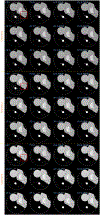




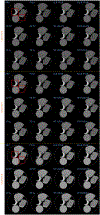



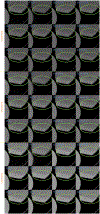

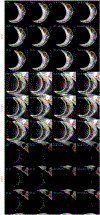
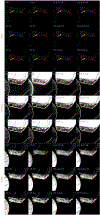
Similar articles
-
Locally linear transform based three-dimensional gradient -norm minimization for spectral CT reconstruction.Med Phys. 2020 Oct;47(10):4810-4826. doi: 10.1002/mp.14420. Epub 2020 Aug 25. Med Phys. 2020. PMID: 32740956
-
Enhancing photon-counting computed tomography reconstruction via subspace dictionary learning and spatial sparsity regularization.Quant Imaging Med Surg. 2025 Jan 2;15(1):581-607. doi: 10.21037/qims-24-1248. Epub 2024 Dec 30. Quant Imaging Med Surg. 2025. PMID: 39838997 Free PMC article.
-
A neural network-based method for spectral distortion correction in photon counting x-ray CT.Phys Med Biol. 2016 Aug 21;61(16):6132-53. doi: 10.1088/0031-9155/61/16/6132. Epub 2016 Jul 29. Phys Med Biol. 2016. PMID: 27469292 Free PMC article.
-
Multi-energy CT reconstruction using tensor nonlocal similarity and spatial sparsity regularization.Quant Imaging Med Surg. 2020 Oct;10(10):1940-1960. doi: 10.21037/qims-20-594. Quant Imaging Med Surg. 2020. PMID: 33014727 Free PMC article.
-
An introduction to photon-counting detector CT (PCD CT) for radiologists.Jpn J Radiol. 2023 Mar;41(3):266-282. doi: 10.1007/s11604-022-01350-6. Epub 2022 Oct 18. Jpn J Radiol. 2023. PMID: 36255601 Free PMC article. Review.
References
-
- Wang Q, Zhu Y, and Li H, “Imaging model for the scintillator and its application to digital radiography image enhancement,” Opt. Exp, vol. 23, no. 26, pp. 33753–33776, December. 2015. [Online]. Available: http://www.opticsexpress.org/abstract.cfm?URI=oe-23-26-33753 - PubMed
-
- Badea CT, Fubara B, Hedlund LW, and Johnson GA, “4-D micro-CT of the mouse heart,” Mol. Imag, vol. 4, no. 2, pp. 1–7, 2005. - PubMed
-
- Alvarez RE and Macovski A, “Energy-selective reconstructions in X-ray computerised tomography,” Phys. Med. Biol, vol. 21, no. 5, p. 733, 1976. - PubMed
-
- Quinto ET, Ehrenpreis L, Faridani A, Gonzalez F, and Grinberg E, Radon Transforms and Tomography. Providence, RI, USA: American Mathematical Society, 2001, vol. 278.
Grants and funding
LinkOut - more resources
Full Text Sources
Other Literature Sources
